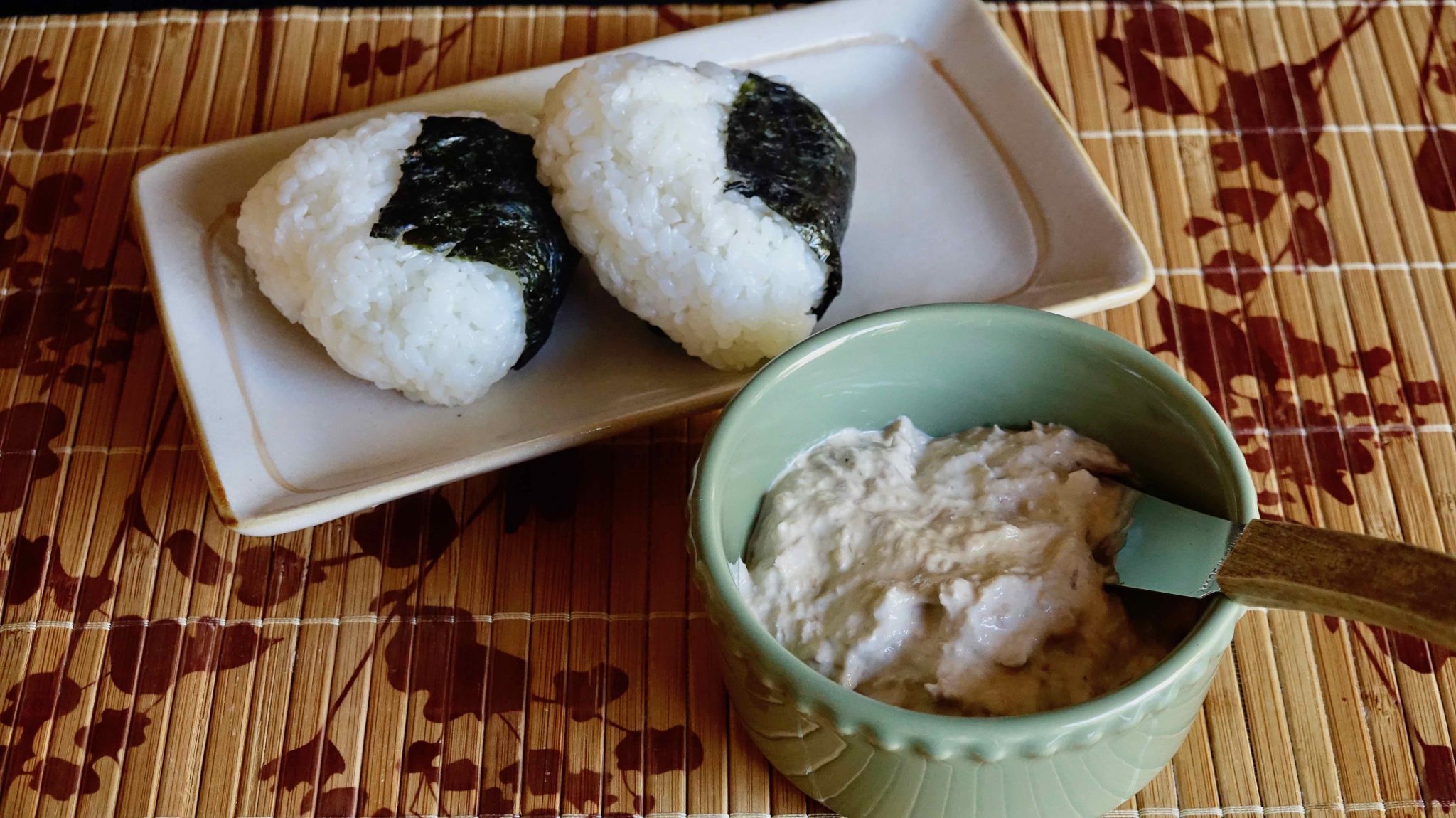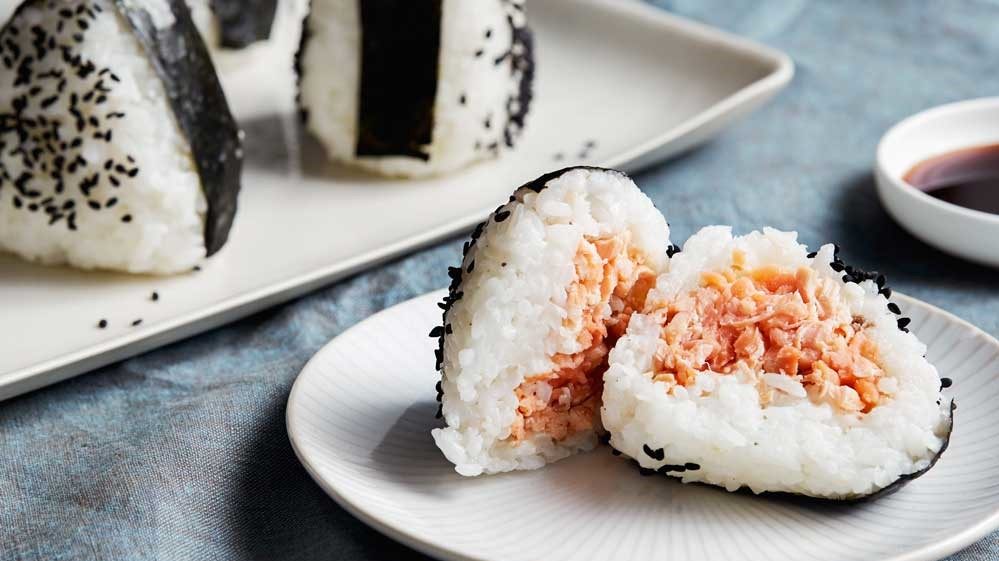Embark on a culinary adventure as we delve into the realm of onigiri, the beloved Japanese rice balls that have captured the hearts of food enthusiasts worldwide. With tuna mayo as our star ingredient, we will explore the intricacies of crafting this delectable dish, unraveling the secrets to achieving the perfect balance of flavors and textures.
From selecting the finest ingredients to assembling the onigiri with precision, we will guide you through every step of the process, ensuring that you master the art of this iconic Japanese delicacy. Along the way, we will uncover variations and additions that will inspire you to experiment and create your own unique tuna mayo onigiri masterpieces.
Ingredients for Tuna Mayo Onigiri
Tuna mayo onigiri is a popular Japanese dish made with cooked rice, tuna, and mayonnaise. The ingredients are simple and easy to find, making it a great option for a quick and easy meal.
The essential ingredients for tuna mayo onigiri are:
- Cooked rice: The rice should be cooked and slightly cooled before using.
- Canned tuna: The tuna should be drained and flaked.
- Mayonnaise: The mayonnaise will help to bind the ingredients together.
- Soy sauce: The soy sauce will add flavor to the onigiri.
- Nori (seaweed): The nori will be used to wrap the onigiri.
In addition to these essential ingredients, you can also add other ingredients to your onigiri, such as:
- Green onions: Green onions will add a fresh flavor to the onigiri.
- Carrots: Carrots will add a bit of sweetness and crunch to the onigiri.
- Cucumbers: Cucumbers will add a refreshing flavor to the onigiri.
Preparing the Tuna Mayo Filling
The tuna mayo filling is the heart of this onigiri. Let’s dive into the steps to create a flavorful and creamy filling.
Cooking the Tuna (if using fresh tuna)
If using fresh tuna, it’s essential to cook it properly to ensure food safety. Here’s how:
- Rinse the tuna steak under cold water and pat it dry with paper towels.
- Heat a non-stick pan over medium heat and add a drizzle of olive oil.
- Season the tuna steak with salt and pepper, then sear it for 2-3 minutes per side, or until it reaches your desired doneness.
- Remove the tuna from the pan and let it rest for a few minutes before flaking it with a fork.
Mixing the Tuna Mayo Filling
Now, let’s assemble the tuna mayo filling:
- In a medium bowl, combine the flaked tuna, mayonnaise, finely chopped celery, onion, and pickles.
- Add a squeeze of lemon juice for brightness and a dash of salt and pepper to taste.
- Mix well until all ingredients are evenly combined.
Achieving the Perfect Consistency and Flavor
For the perfect tuna mayo filling, consider the following tips:
- Use high-quality mayonnaise for a richer flavor.
- Adjust the amount of mayonnaise to achieve your desired consistency. For a creamier filling, add more mayonnaise.
- Don’t overmix the filling, as it can become mushy.
- Taste the filling and adjust the seasonings as needed.
Assembling the Onigiri

Assembling onigiri is a simple yet crucial step that determines the final shape and presentation of the rice balls. Follow these steps to achieve perfectly formed onigiri:
Shaping the Rice
Take a handful of cooked rice and form it into a triangular or round shape using your palms. Ensure the rice is compact but not too tightly packed, as this can make it difficult to fill.
Filling with Tuna Mayo
Make a small indentation in the center of the rice ball and spoon in the prepared tuna mayo filling. Adjust the amount of filling according to your preference.
Wrapping with Nori (Optional)
If desired, wrap a sheet of nori seaweed around the base of the onigiri to add flavor and visual appeal. Wet your fingers slightly to help the nori adhere to the rice.
Cutting and Serving
Cut the onigiri into smaller pieces for easier consumption. Use a sharp knife and make clean cuts to preserve the shape and prevent the filling from spilling out. Serve immediately with soy sauce or other dipping sauces as desired.
Variations and Additions

Tuna mayo onigiri is a versatile dish that allows for endless variations. Experiment with different types of tuna, such as albacore, yellowfin, or skipjack. Each type offers a unique flavor and texture.Beyond tuna mayo, there are numerous other fillings you can explore.
Consider using cooked salmon, mackerel, or shrimp for a seafood-based onigiri. For a vegetarian option, try mashed avocado, roasted vegetables, or tofu scramble.Incorporate vegetables, herbs, and other flavors to enhance the taste and nutritional value of your onigiri. Add chopped scallions, diced celery, or grated carrots to the tuna mayo filling.
Sprinkle dried seaweed flakes or sesame seeds on top for an extra layer of umami. Experiment with different herbs, such as basil, parsley, or cilantro, to add freshness and depth of flavor.
Enhancing Flavors
- Incorporate vegetables like chopped scallions, diced celery, or grated carrots into the tuna mayo filling.
- Sprinkle dried seaweed flakes or sesame seeds on top for an extra layer of umami.
- Experiment with different herbs, such as basil, parsley, or cilantro, to add freshness and depth of flavor.
Presentation and Serving
Tuna mayo onigiri is a versatile dish that can be presented in various ways to suit different occasions.
For casual gatherings or quick meals, onigiri can be arranged on a plate or in a bento box with other snacks or side dishes. When serving onigiri as part of a larger meal, consider pairing it with soups, salads, or grilled dishes for a balanced and satisfying spread.
Arranging and Garnishing
To enhance the visual appeal of onigiri, experiment with different ways to arrange and garnish them. Arrange onigiri in rows or circles, or create fun shapes by cutting them into triangles or squares. For added color and texture, wrap onigiri with nori seaweed or sprinkle with sesame seeds, furikake seasoning, or chopped herbs.
Serving as Part of a Meal or Snack
Onigiri is a versatile dish that can be enjoyed as a snack or part of a larger meal. As a snack, onigiri can be served with dipping sauces or pickled vegetables. For a more substantial meal, pair onigiri with miso soup, grilled fish, or a side salad for a balanced and satisfying experience.
Final Summary
As you embark on your onigiri-making journey, remember that the true joy lies in the process itself. Experiment with different flavors and techniques, and don’t be afraid to make mistakes. With each onigiri you create, you will refine your skills and deepen your appreciation for this culinary art form.
So gather your ingredients, embrace the spirit of Japanese cuisine, and let us embark on this delicious adventure together.
Questions and Answers
What is the secret to achieving the perfect rice texture for onigiri?
The key to perfectly cooked rice for onigiri lies in using the correct water-to-rice ratio and cooking method. Short-grain Japanese rice is ideal, as it becomes sticky when cooked, which is essential for holding the onigiri together. Rinse the rice thoroughly before cooking to remove excess starch, and use a 1:1 ratio of rice to water.
Cook the rice in a rice cooker or on the stovetop until all the water has been absorbed.
How can I prevent my tuna mayo filling from becoming too runny?
To achieve the perfect consistency for your tuna mayo filling, it is crucial to drain the tuna thoroughly before mixing it with the mayonnaise. Use canned tuna packed in water or oil, and drain it well using a fine-mesh sieve or cheesecloth.
This will remove excess moisture and prevent the filling from becoming too runny.
What are some creative variations I can try for my tuna mayo onigiri?
There are endless possibilities for customizing your tuna mayo onigiri. Try adding chopped vegetables such as carrots, celery, or cucumber for a refreshing crunch. Incorporate herbs like cilantro, basil, or parsley to enhance the flavor profile. You can also experiment with different types of tuna, such as albacore or yellowfin, to vary the taste and texture.
